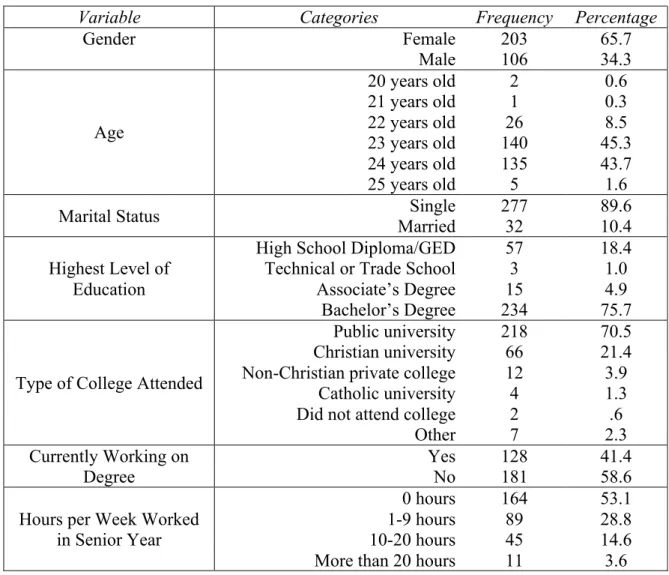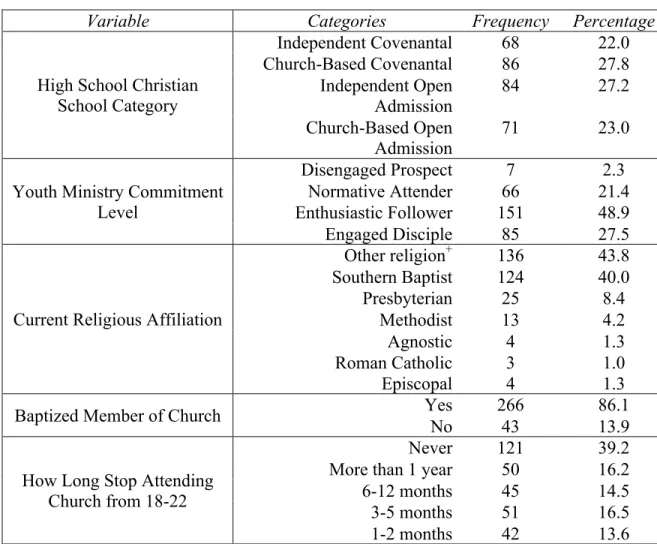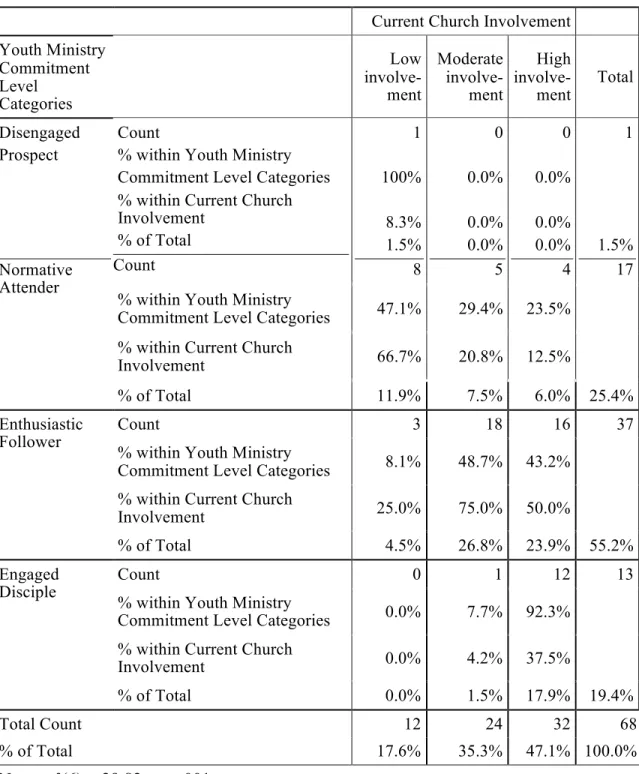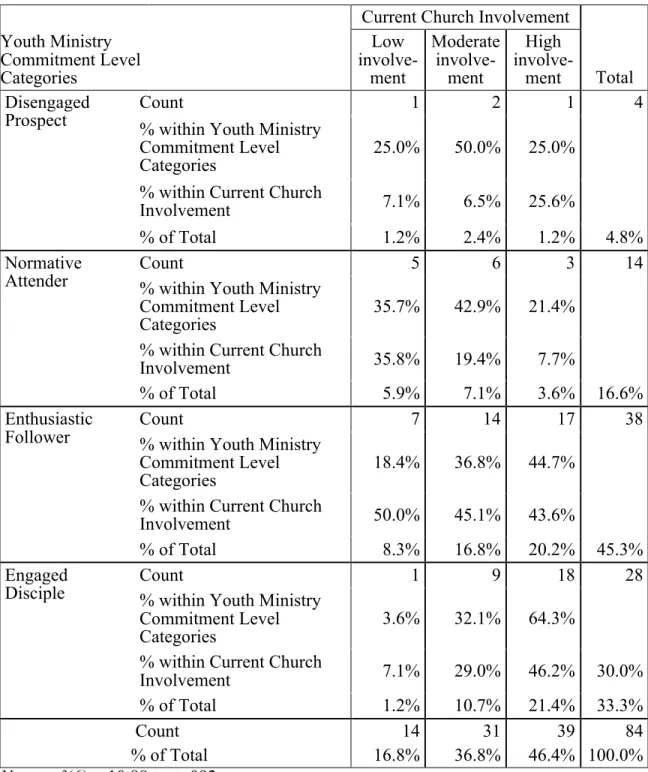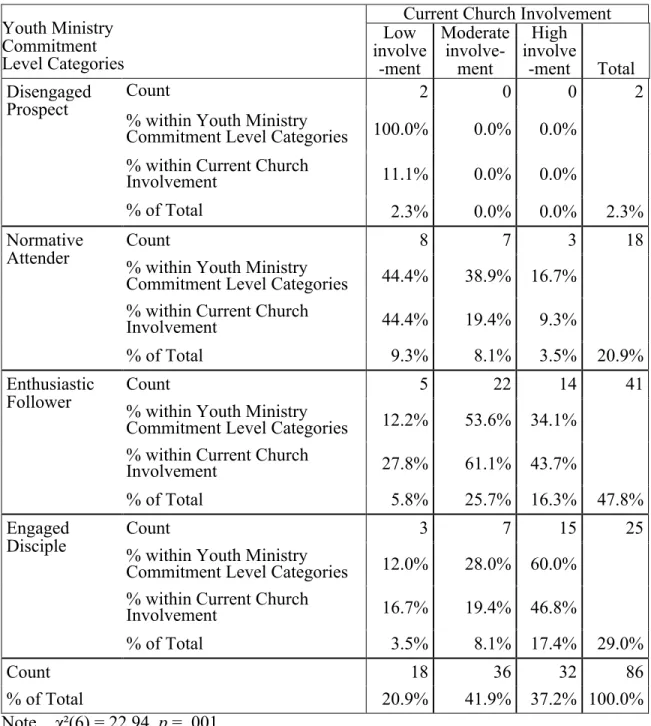LIST OF ABBREVIATIONS ACSI Association of Christian Schools International FJYA Faith Journey of Young Adults. There is not nearly enough space for me to thank everyone who has helped in this journey. First, I express my sincere thanks to my wife, Mary Julia, for all the support she has given me during this endeavor.
Second, I am thankful and grateful for the love and support of my parents, Jerry and Carol Kaiser, who have always encouraged me to give it my all. Third, I am grateful to my sister, Connie Peavler, who has always believed in me, no matter how hard it was. I will always be grateful for their sacrificial investment in making me a better thinker and writer.
I am very grateful to my friend, Brandon Shields, who allowed me to use his instrument so that I could promote the work of the youth ministry and the local church. I am also grateful to Highview Baptist Church, especially Jimmy Scroggins, who launched me on this journey; Long Hollow Baptist Church, who has supported me throughout; and Florence Baptist Church for letting me finish well.

RESEARCH CONCERN
Wesley Black defines youth ministry as "the work of the whole church that emphasizes the spiritual development of young people, adults who work with young people, and parents of young people". If there is to be a clearer understanding of what is happening with young adults and the church, one must be able to identify "young adults". According to Rice and Dolgin, adolescence is "the period of growth between childhood and adulthood" (Rice and Dolgin 2001, 1). It was the American high school that created what is known today as "youth culture." The role of the grammar school has not only influenced youth culture, but also how the church has responded to young people.
Fields writes that a purpose-driven youth ministry is built on the five purposes of the church given by God in the Holy Scriptures: evangelism, worship, fellowship,. According to Steve Reeves, “The developing church desperately needs the example and counsel of older, wiser members. Regarding Paul's "joints and knots," the interconnectedness and mutual interest between generations is highly valued.
Stephen Haymond explains the crucial relationship that has disappeared: “The missing link is one that is virtually non-existent in today's youth culture, including youth. The morality taught at the time was clearly the result of the authority from which it emanated: "The Bible served as the primary text for reading, and daily lessons reinforced a commitment to moral codes of conduct based on Scripture." The classroom must and will become an arena of conflict between the old and the new—the rotting corpse of Christianity, with its attendant evils and misery, and the new faith of humanism.
The Christian triumphalist assumed that “dominant intellectual culture was hopelessly flawed by its secular assumptions. David Wells asserts, “The combined influence and ministry of home, church, and Christian school on our children and youth is immeasurable” (Wells 2009, acsi.org). The Barna Research Group observed that “the most powerful piece of data regarding disengagement is that most twenty-somethings—61% of today's young adults—were once churchgoers in their teens but are now spiritually disengaged” (Barna Group 2006, barna .org ).
The authors noted, “the evidence shows that private schools and public schools are not significantly different when it comes to involvement in community life” (Pennings et al. 2014, 29). They provide one of the largest studies ever conducted on the details of Christian school graduates. Alarmingly, Robert Wuthnow adds, “The proportion of young adults who identify with major Protestant denominations is about half the number a generation ago (Wuthnow 2007, 214).
It was for this reason that Mike Yaconelli said, "The curtain must be pulled back if we are to keep young people involved in the church, and if we are to renew our congregations, we must first recognize that many of our current forms of youth ministry are destructive ” (Yaconelli 1999, 2). LifeWay now says, “the primary 'decline' in church attendance among evangelical youth did not appear to be a complete 'decline,' but rather a pause" (Stetzer 2014, christianitytoday.com). For survey sample, there were 84 respondents in the open access independent Christian school subgroup (27.2% of the total sample).
The purpose of the 4 x 3 ANOVA was to discern whether there were differences in current church involvement based on both the type of Christian high school a participant attended and the participant's level of involvement in youth ministry.
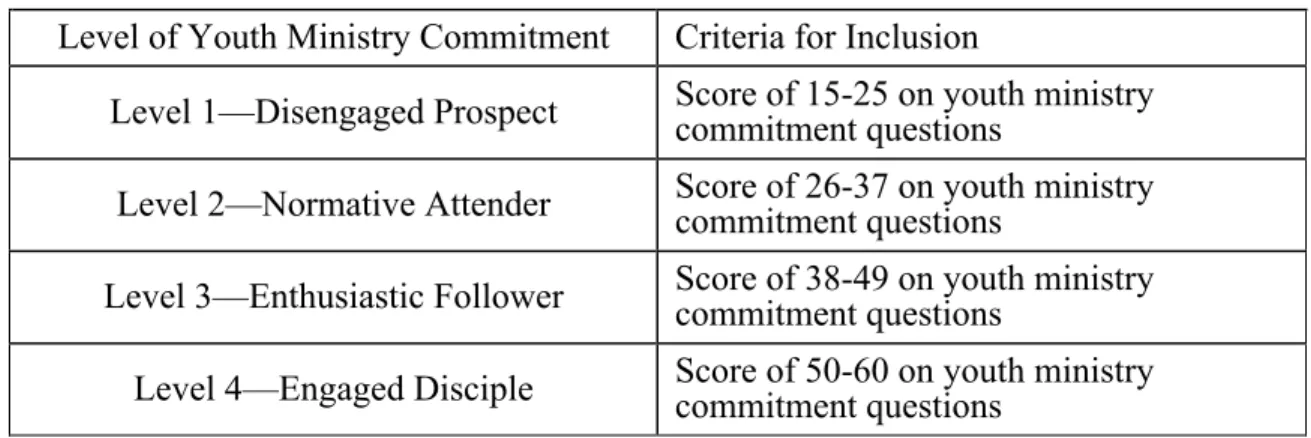
CONCLUSION
Using the parameters of the literature base, a retention rate of 79.1% was determined for those participants classified as church-affiliated covenant Christian school graduates. The data revealed that the type of Christian high school attended did not play a significant role in the participants' current church involvement. A clearer expression of the retention rate for this study is 82.9%, which includes only those involved in moderate and high levels of church involvement.
These statistics cannot be extrapolated beyond the limits of this study; however, the data identified a segment of young adults who have not left the church in the mass amounts indicated in previous studies. This research provides valuable support for student ministry discipleship and Christian education where school environments are created to reinforce the teachings of the local church. It seems that the competitive advantage, pros and cons and theological reasoning for choosing one of the four philosophical types of Christian schools.
Finally, another critical implication of this research is the need to clarify the vernacular associated with church preservation. In the local church, it is those who lead (namely the pastors and staff) who shape the language of the organization. Christian parents, Christian educators, and student pastors should consider the information about discipleship suggested by the results of this study.
This research project should only bring awareness to parents to understand the value of helping connect their teen with a local church youth ministry. The context where these disciples will learn the necessary habits is the local church with all the spiritual wisdom it can muster. From this perspective, the findings of this research could influence recruitment practices, as teachers are an extension.
There were some limitations regarding the generalizability of the research findings as the study was limited to only those schools accredited by ACSI and. Research may not necessarily generalize to ACSI member schools outside the United States. A qualitative research project or even a mixed methods approach would not only be a good follow-up to this study, but also to the work of Cardus.
Please circle the number that most accurately represents your current attitudes using the following scale
The purpose of this research will be to survey Christian high school graduates who previously participated in a youth ministry in an effort to compare their current levels of church involvement with their levels of engagement during secondary school. As part of this process, I invited you to participate in this study as an expert panelist because of your leadership, training, and research competencies in the field of youth ministry. Attached you will find the Youth Ministry Sustainment Questionnaire and the Guidelines for the Expert Panel.
Your time and commitment to my research will enable both practitioners and future researchers to better understand the phenomenon of youth ministry retention. Overall, the responses listed below represent varying degrees of youth ministry commitment for high school students. Do the survey questions adequately address the issues of youth ministry commitment, demographics and church involvement.
I would like to invite you to participate in this study through an online survey, where you basically answer a few questions about your Primary experience and your current involvement in the Church. The development of youth work as a professional career and the distinctive features of the youth work program at Liberty University to prepare students for youth work. The purpose of this study was to examine the claim that 70 to 90% of Primary participants leave the Church after graduating from high school.
To accomplish the purpose of the study, the Shields Youth Ministry Retention Questionnaire (YMRQ) was used to compare Christian graduates' engagement in youth ministry with their current levels of church involvement. Based on the results of the research, applications are made for Christian education and local church youth ministry.

